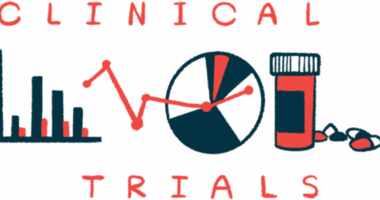Most recent liver stiffness test best predicts risk of PBC progression
Study: Prior trajectories, biochemical changes did not improve predictions

The most recent assessment of liver stiffness best predicts the future risk of liver disease progression among adults with primary biliary cholangitis (PBC), regardless of past treatment responses, a study showed.
“We demonstrated that once the current LSM [liver stiffness measurement] is known, prior LSM trajectories and biochemical changes did not improve the prediction of liver-related events in patients with PBC,” researchers wrote.
The study, “Prognostic value of liver stiffness measurement vs. biochemical response in primary biliary cholangitis,” was published in the Journal of Hepatology by an international team of researchers, on behalf of Global & ERN Rare-Liver PBC Study Groups.
Previous research: Liver stiffness tracking helped predict PBC outcomes
PBC is characterized by chronic inflammation of the bile ducts, the tubes that carry bile, a digestive fluid, from the liver to the intestines. This inflammation can affect the flow of bile, causing it to build up to toxic levels in the liver, which can lead to liver damage, permanent scarring, known as cirrhosis, and liver cancer.
Two methods have been used to predict PBC progression risk: blood tests for liver enzymes, which serve as liver damage markers, and a noninvasive imaging scan to measure liver stiffness, or the hardening of the liver caused by scar tissue.
Previous work by the team of researchers showed that LSM tracking helped predict PBC outcomes, “offering a predictive measure for the risk of liver-related events and making LSM a potential surrogate measure of treatment efficacy in clinical trials,” the researchers wrote.
However, “how to weigh the predictive value of the previous LSM trajectory or biochemical responses versus the prediction obtained by using just the current LSM value in PBC patients, to our best knowledge, has not been investigated,” they added.
About 27% of participants had compensated advanced chronic liver disease
In this study, the team sought to determine whether the most recent LSM could predict PBC progression and if changes in past LSMs or blood tests could enhance that prediction.
The study included 1,793 people with PBC across 13 countries who underwent at least two LSMs, six months apart.
Over a median follow-up of 22 months, or nearly two years, 60 people (3.3%) developed liver decompensation, when the organ can no longer function properly due to extensive scarring, after the most recent LSM. Also, 34 (1.9%) people received a liver transplant, and 80 (4.7%) died.
About one-fourth (27.2%) of the participants had compensated advanced chronic liver disease (cACLD), based on an LSM value of at least 10 kPa (normal range: 2 kPa to 7 kPa). In cACLD, the liver can still perform its functions despite significant scarring. It was used to classify patients at risk of liver-related events.
Participants who met the cACLD criteria had significantly worse liver function, as indicated by blood tests at the first LSM and a high first LSM value, a greater LSM rise between assessments, and were significantly less likely to have a biochemical response after treatment relative to those without cACLD.
The cACLD group was also at a higher risk of developing liver decompensation (10.7% vs. 0.6%), undergoing a liver transplant (6.4% vs. 0.2%), and dying due to liver complications (4.7% vs. 0.4%), compared to patients without cACLD.
About half of participants had a biochemical response to treatment
About half of the participants (51.1%) achieved a biochemical response to treatment, as measured by changes in blood levels of PBC-related biomarkers around the time of the first LSM. A similar proportion (51.6%) achieved an LSM response, defined as stable or decreasing LSM values between the first and last LSM.
Even so, about half (52%) of the reported response data didn’t match. The researchers suggested this may be due to timing differences between biochemical and LSM assessments, or operator variability in LSMs.
Among people with LSM response, achieving a biochemical response was significantly associated with a lower risk of liver decompensation (75%). Among those with biochemical response, LSM response did not influence the risk of liver decompensation. When biochemical and LSM responses were discordant, neither alone was a significant risk predictor.
The latest LSM was found to be the “strongest predictor of [liver] decompensation compared to LSM response and biochemical responses,” the team wrote.
Notably, having cACLD, or an LSM value higher than 10 kPa at the latest assessment, was significantly associated with a 14.5-times higher chance of liver decompensation, “irrespective of biochemical response or concordance between biochemical and LSM responses,” the researchers wrote.
The risk of liver decompensation increased proportionally with increasing values at both the current and prior LSM.
Past LSM changes or biochemical responses added no value to the latest LSM in predicting the risk of PBC progression. The results remained consistent when liver transplant and death were used as progression outcomes, instead of liver decompensation.
The team noted that these findings suggest that the latest LSM can be used to assign future risk, while changes in LSM alongside biochemical responses can be used to evaluate treatment effectiveness.








